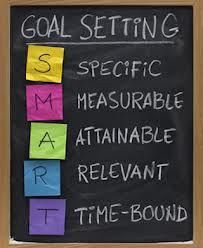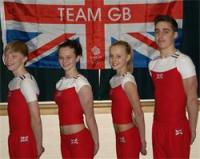Main Menu
Latest Blog Entry
User login
How to change habits: part 2
“Living without an aim is like sailing without a compass.”
 Alexandre Dumas.
Alexandre Dumas.
In part 1 I set the scene of how athletes need help in adopting behaviours that will improve their sporting performance. Today I will look at how to set goals that will get them started.
“The difference between a wish and a goal is the act of writing it down.”
That is paraphrasing something I heard years ago. In order to make changes, a plan has to be put in place. The initial goal setting is where most people fall down in my experience.
This has come from years of working in a Health Club environment of the “I want to lose a bit of weight” clientele (really meaning “I want to look good naked), and the “I want to be bigger” from young rugby players (really meaning “I want to look good naked”).
If you are not clear in what you are trying to achieve and honest with yourself, it will not work. You will set yourself up for failure, and then this becomes a habit.
Big Hairy Audacious Goals (BHAGs)
Taken from Jim Collins and Jerry Porras excellent “Built to Last” book (1). These are basically very emotionally compelling and challenging goals. An example might be “play Hockey for England” or “Run a 4 minute mile”.
When looking at how successful goal setting is and how it changes behaviour, people with high levels of self efficacy respond well to challenging goals, they are better at setting the tasks that are needed to achieve the goal (2).
People with low levels of self efficacy do not respond as well to BHAGs, because they are less able to set the appropriate tasks.
However, modifying the goal slightly to “try your best” rather than focussing on the outcome can help.
SMART Goals
 Last year I ran a workshop that aimed to help young athletes plan their next 4 weeks. When asked if they new what SMART goals were, most of them nodded their heads and said they had done it in P.E. or with another coach.
Last year I ran a workshop that aimed to help young athletes plan their next 4 weeks. When asked if they new what SMART goals were, most of them nodded their heads and said they had done it in P.E. or with another coach.
When we tried to put it in practice, I quickly saw how they may have been able to recite the “Specific, Measurable, Attainable, Relevant and Time Orientated”but they struggled to put this down on paper.
This shows the problems of using acronyms in coaching, they can obscure information and limit understanding (see also S&C, SAQ, BHAGs etc).
The major difficulty the athletes found was seperating their wish (BHAG?) such as playing for England from a plan for the next month. In order to achieve their wish, they need to be able to identify a series of actions or smaller goals that can be achived in the measurable time frame of a month.
An example.
A junior javelin thrower wants to be able to throw 55m next year. He is currently throwing 47m. There are 6 months before the start of the competitive season. This is Specific, Measurable, Achievable, Realistic and Time Orientated.
However, how he goes about achieving that goal is now the key part.
He thinks he needs to be stronger and to work on his range of movement of his thoracic spine. He needs to plan each month (periodisation geeks give me a break: this is the real world) and have some goals to work on that help him achieve this.
The overall sub goals might include: strength work, eat right (to facilitate the strength gains) and mobilise thoracic spine. Rather than test/ measure his strength, I aim to get him in the habit of strength training and programme work that includes T-spine mobility.
If he sticks to the process, then the outcome will take care of itself. As a junior and new to strength training, I would be stupid to try and set a goal for him based on flimsy evidence now (note to S&C coaches:his aim is to throw the javelin further, not to get score x in the gym).
Summary
Goal setting theory is sound and has shown to be very effective. Where it falls down is in the setting of the wrong type of goal for the situation and if the goal is imposed rather than self directed or agreed.
Once the goal is established, it is the work that has to be done to achieve that goal that is crucial. Here planning and understanding of the real world are essential.
Do not try and do everything at once, break the plan down into incremental tasks that become habits.
In part 3 we will look at some useful tools to help sustain the habits/ tasks that are necessary to achieve your goals.
References
1 Building a Practically Useful Theory of Goal Setting and Task Motivation: A 35-Year Odyssey. Edwin Locke, Gary Latham.
2 Built to last: successful habits of visionary companies. Jim Collins, Jerry Porras
Client Testimonials
 Weston AGC
Weston AGC
I first met James at a South West Gymnastic conference and thought he was superb then, and still do! James' ability to adapt to different sports and levels is excellent, and he is superb at getting his message across to different ages of gymnasts. He did a workshop at our club for our competitive gymnasts and it was superb, His work was of great value to a wide range of ages and levels, with a tremendous emphasis on posture and injury prevention. We have been able to put his training methods into practice and are seeing an improvement in the all round strength and fitness of our gymnasts.
More


Comments
[…] you have a goal or a wish? Lots of athletes have idle day dreams, but taking the time to write down your goals and set up a plan is […]
[…] emphasised how goal setting can assist athletes with mental toughness. Bill Sweetenham uses a “1,2,3” approach to […]
These goals are hard to write down especially when your goals revolve around everyday life. However a plan without a plan is another excuse to my list of why I can’t keep up anymore.